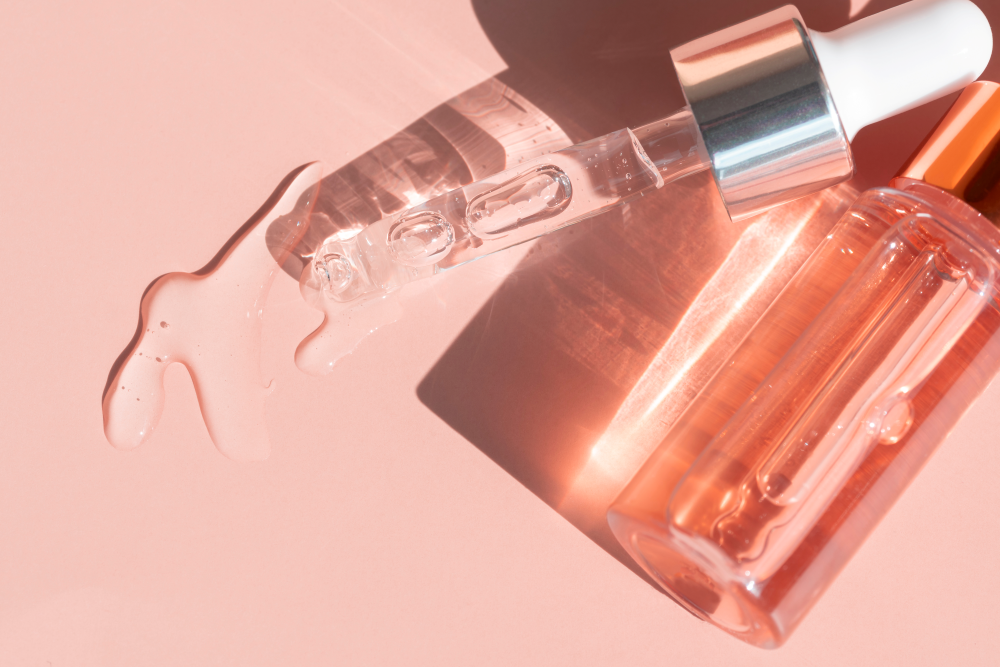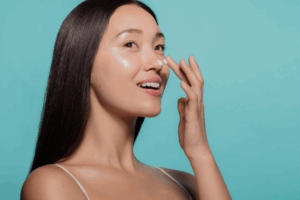Read Full Article HereThese two skincare ingredients are everywhere—but how do they actually work, and which is better?
In the world of skincare, sometimes it feels like there’s a buzzy new miracle ingredient every time you open up TikTok. But while trends come and go, there are a few gold-standard ingredients that have truly earned their keep—and two of the biggest names in that category are hyaluronic acid and niacinamide.
These derm-approved MVPs show up everywhere: serums, moisturizers, sunscreens, and even hair products.
So, who should use which, can you use them together, and is one better than the other? Below, we break it all down from the experts.
What is hyaluronic acid, exactly?
When used in skincare, hyaluronic acid (you’ll sometimes see it listed at sodium hyaluronate on an ingredient label) is one of the best moisturizers out there thanks to its unique ability to attract and retain water—up to 1,000 times its weight.
Here’s how it works: It draws moisture into the skin either from deeper layers that are always moist or from the atmosphere, then helps hold it there. The result? A plumper, smoother, and more hydrated complexion.
Sadly, as we age, our natural supply dips—hence the need for topical products. Hyaluronic acid has earned its status as a skincare hero not just for its hydration superpowers, but also for its versatility. It’s suitable for nearly every skin type, plays well with other ingredients, and has little to no side effects. Whether you’re tackling dryness, dullness, or fine lines, it’s a go-to for boosting moisture without the heaviness of thicker creams or oils.
These are the products that contain hyaluronic acid.
Hyaluronic acid shows up in nearly any type of product you’d encounter on a story shelf, but you’ll most often find it in:
- Serums: These are usually the most concentrated and best for delivering a big hit of hydration. Apply to damp skin, then follow with a moisturizer to seal it all in.
- Moisturizers: These do double duty by combining hyaluronic acid with emollients and occlusives (like squalane or ceramides) to lock in hydration and strengthen your skin barrier.
- Sheet masks: Think of these as a quick hydration boost after cleansing and toning but before applying any makeup.
- Lip products: From balms to glosses, hyaluronic acid helps pull in moisture and keep lips soft, smooth, and less prone to chapping or cracking.
- Eye creams: Because the skin around your eyes is thinner and more delicate, eye creams with hyaluronic acid offer targeted hydration that can help temporarily reduce the appearance of fine lines and puffiness.
So what’s niacinamide?
Niacinamide is a form of niacin—also known as vitamin B3—that’s a combination of vitamin B3 and nicotinic acid.
Inside the body, vitamin B3 helps regulate your metabolism, supports liver detox, and even lowers bad cholesterol, she explains. When applied topically, niacinamide becomes a powerful anti-inflammatory, a go-to for calming redness, soothing irritation, and improving overall skin tone. And, like hyaluronic acid, it’s one of the few skincare ingredients that can work for dry, oily, acne-prone, and sensitive skin types all at once.
What are the benefits of niacinamide?
Niacinamide may not get as much hype as trendier ingredients, but it earns points for being gentle, effective, and highly versatile. Here’s what you can expect with regular use:
Reduced redness and irritation
If you have sensitive skin, acne, or rosacea, niacinamide can help calm inflammation, which is what can lead to a flushed appearance and an itchy, irritated outer layer, says Dr. MacGregor. This is one of its most prominent and celebrated benefits.
A stronger skin barrier
Niacinamide helps repair and reinforce the skin’s natural barrier—the protective layer that locks in moisture and keeps out irritants and bacteria. When that barrier is strong, skin looks and feels healthier: think more hydration, less dryness, and fewer visible fine lines.
Smaller-looking pores
No, you cannot shrink your pores—what you’ve got is what you’ve got—but there are plenty of ways to minimize their appearance. By regulating skin’s production of a natural lubricating oil called sebum, niacinamide can help make large pores appear smaller and less noticeable over time.
Brighter and more even tone
Looking to get the most glowing complexion possible? Niacinamide can also gently fade discoloration like sun spots, post-acne marks, and quell any lingering redness to help brighten dull complexions.
The bottom line.
Both hyaluronic acid and niacinamide are generally considered safe for all skin types—including sensitive skin—which is part of what makes them such staples in the skincare world. That said, irritation is always a possibility, especially if you’re layering multiple active ingredients or using formulas with high concentrations.
To keep your skin happy, start slow—especially with niacinamide. If you choose a product with niacinamide alone, aim for a 3% – 5% concentration. Formulas with less than 3% have not been shown to produce statistically significant improvements when compared to a control and anything over 10% may be too aggressive for someone with reactive skin, says Dr. Melody Maarouf, MD, a board-certified dermatologist at U.S. Dermatology Partners in Phoenix. If you have any concerns, you may want to patch test any new products before going all-in. And you can always dial things back if you notice redness, stinging, or breakouts.
Ultimately, though, both ingredients are popular for a reason—they’re effective, low-maintenance, and incredibly versatile. When used correctly, hyaluronic acid and niacinamide can be a powerful one-two punch for healthier, glowier skin.
Niacinamide Vs. Hyaluronic Acid: How to Pick the Right One for Your Skin
June 6, 2025







